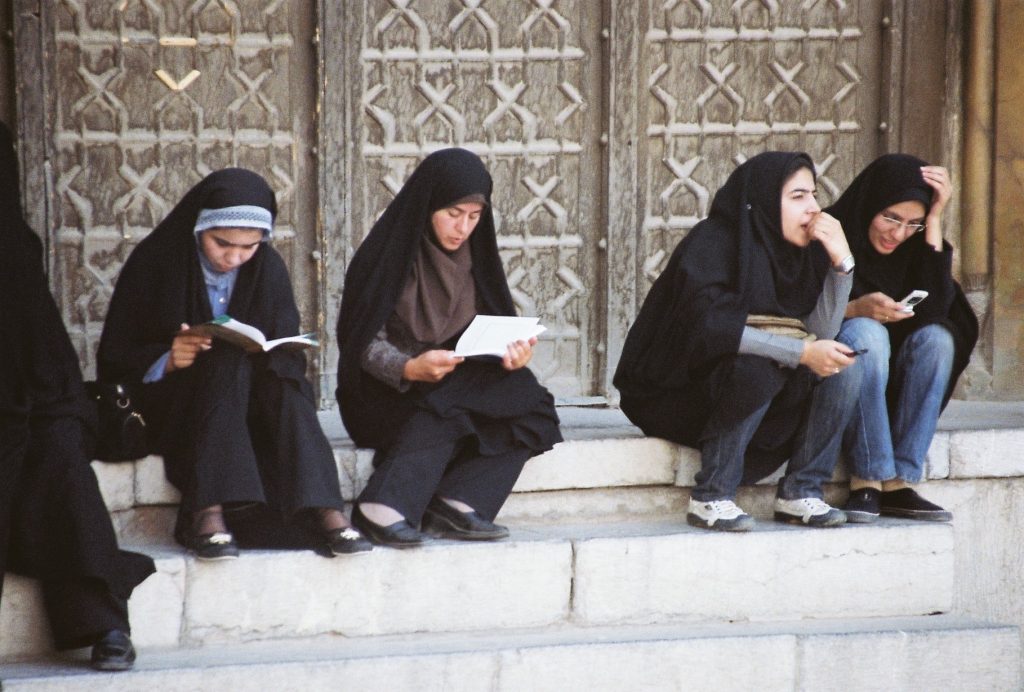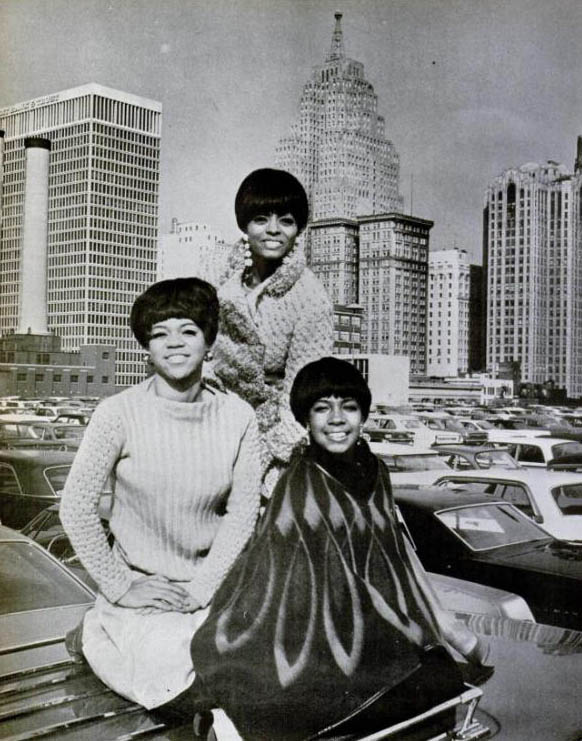nonfiction by Marcin Otto, from Stefanie Wortman’s essay in MQR 53:3 Summer 2014
“On the last day of February 2009, I received an e-mail from an unfamiliar address with the subject line ‘About another Stefania.’ The e-mail writer, a man from Poland named Marcin Otto, had been searching the internet for a “very dear lady” he remembered from childhood. When he found me instead and noticed that I was a writer, he thought I might be interested in hearing more about her.”
So begins Stefanie Wortman’s tale about Marcin Otto and the PowerPoint presentation he sends her about her Polish namesake, Stefania Wortman, and the life she lived in Warsaw before, during, and after World War II. Stefanie Wortman vividly describes this odd and moving document and the unusual life it chronicles in “The Lion’s Heart Disease” in the Spring 2014 issue of MQR. Here is the actual PowerPoint presentation in full—with text and photos below or as a pdf of the original document.
Her name was Stefania, an old-fashioned name by today’s standards – I do not know anybody of that name – though quite popular before the war. I will call her Stefa, which is a diminutive form. She was born on November 5, 1912 in Warsaw, I guess, and had a brother. Her father Edward was a well-known dentist, and this tallies with my interests because, among other things, I teach history of dentistry, but I do not have a record of his practice. Before the war, Stefa majored in Polish literature and received her degree from the University of Warsaw. Looking for traces of her father I checked the telephone directory from 1936, but it only lists Stefa’s mother, Eleonora. My belief is that Stefa’s father must have been dead by that time, otherwise his name as a dentist would be in the phonebook advertising the practice, not his wife’ s. This is the actual scan, and the address is Elektoralna street, which is in the center of Warsaw. House number 5 no longer exists. It actually ceased to exist in 1943, but I will get to that later.

In early 1940, several months into the Nazi occupation, Elektoralna found itself in the middle of a huge quarter called the Warsaw Ghetto, surrounded by a tall wall. Eleonora was Jewish but apparently she abandoned the flat with her children and stayed outside of the Ghetto, concealing their Jewish identities. In practice, it was a question of whether you looked Semitic and had the papers in order. If you were spotted by the Nazis you would have been killed on the spot for defying the order of wearing the star and being on the Aryan side of the wall.

Stefa’s brother never went outside of wherever they were living, and it proved too much for him and he eventually committed suicide. Eleonora was a brave woman who openly left the house and carried on a dangerous life to support her two children.

What Stefa did during the occupation I do not know, however, in one book called The Last Eyewitnesses Speak: The Holocaust Children Remember somebody called Henryk Gantz wrote: “I was a young boy and with my parents’ help I managed to get through the gate (of the Ghetto) unnoticed and Stefania Wortman was waiting for me on the other side, and she took me to another district of Warsaw to someone who looked after me.” That was in June of 1942. If this pertains to our Stefa it would indicate that she – risking her own life – might have been involved in helping the Jews get out of the Ghetto before the Uprising in 1943 and the total annihilation of the area by von Stroop’s troops and massive deportation of what remained of the Jewish population to gas chambers.

Therefore, the disappearance of Elektoralna no 5 and thousands of other buildings in what now used to be The Ghetto.

Exactly the same place today, 50 years later. In late 1950s, it was decided to commemorate the millennium of Poland in 1966 (in 966 Poland accepted Christianity) and build one thousand schools all over Poland. This was the first one and all the others followed the same architectural pattern. It teaches kids between the ages of 15- 18 before they go to universities.

It is a coincidence that at the time of Stefa’s death in 1982, I taught English at that school.

My Mum spent the occupation in an orphanage as her mother was dead and her father was in a German POW camp. She got to know Stefa in the summer of 1945 when Stefa came to stay in that place with Eleonora and took a job as a librarian. My Mum was 20 at that time and Stefa was 33. She was surprised that Stefa spent so much time in bed, and that her mother dotted on her practically tying her shoe laces. It was much, much later that she found out why: Stefa had undergone radical mastectomy for breast cancer. Two years later they left the house, which by the way was quite famous having been set up by Janusz Korczak in late 20s, if that name rings a bell with you.

My Dad fought in the Warsaw Uprising of the summer of 1944. Having been a member of the Home Army it was extremely difficult for him to find a job after the war. The Communist regime perceived such people as enemies of the state and preferred to have the more prominent ones locked in prisons. This is where Stefa re-enters the scene: she used her influence to get him a job in a publishing house.

Gradually, Stefa became an expert, a revered authority on literature for children and she prepared editions of Andersen and others. She did an excellent translation of The Wizard of Oz. In 1958 she wrote an essey on Fairy tales in literature and children’s lives. Her crowning achievement was an anthology of fairy tales and sagas. It was called At the golden spring.

In one article she is quoted as saying: “Never bargain away fairy tales for the price of comforts of everyday life, never allow fairy tale wonders – symbols of dreams and longings – to be subordinated and overpowered by victorious technology. Do you remember The Never-ending Story? The fairy tale is within us.” A couple of weeks ago I was looking through an old magazine for women from 1949. And they printed fragments of her article. It was called: On falsifying reality in books for girls. It is a very interesting article, surprisingly devoid of propaganda which by 1949 permeated everything printed or published. She says that waiting for a prince in the shining armor is commonplace, if more dangerous than it may seem resulting in dominance of imagination over feeling, and in wasting a genuine emotion for the sake of false romanticism… She quotes a conversation between Emily and her aunt by L. Montgomery in Emily of New Moon: If you learn how to use your eyes, hands and legs you will be regarded as a beauty and will dazzle men… This, according to Stefa, teaches vanity, and induces a conviction of the superiority of things external over internal.


Stefa never married, nor did she have any children. She lived with, and looked after her mother until her death in 1976. She was truly devoted to her.

In the early sixties, when I was a little boy, I would go with my parents to visit the two ladies. The flat was small, and all I remember were books and books and books. Eleonora was a petite old lady, but very energetic considering her age. I remember her as ancient, I thought she was a hundred – a holocaust survivor, although I knew nothing about it as a child. And I remember Stefa as very cheerful and optimistic, always smiling.

I lost touch with them. Stefa died 18 June 1982. Apparently, after so many years, cancer relapsed in the other breast, and that’s what eventually killed her. Her name now comes up in reference with the anthologies she prepared. I managed to find their grave and evidently there is no-one to look after it and it is in need of attention which I will now try to provide. The dates confirm what I have written. The inscription says that Eleonora was Edward Wortman’s widow (wdowa) and that for her daughter she was a beloved mother. She was indeed four years short of being a centenarian.





